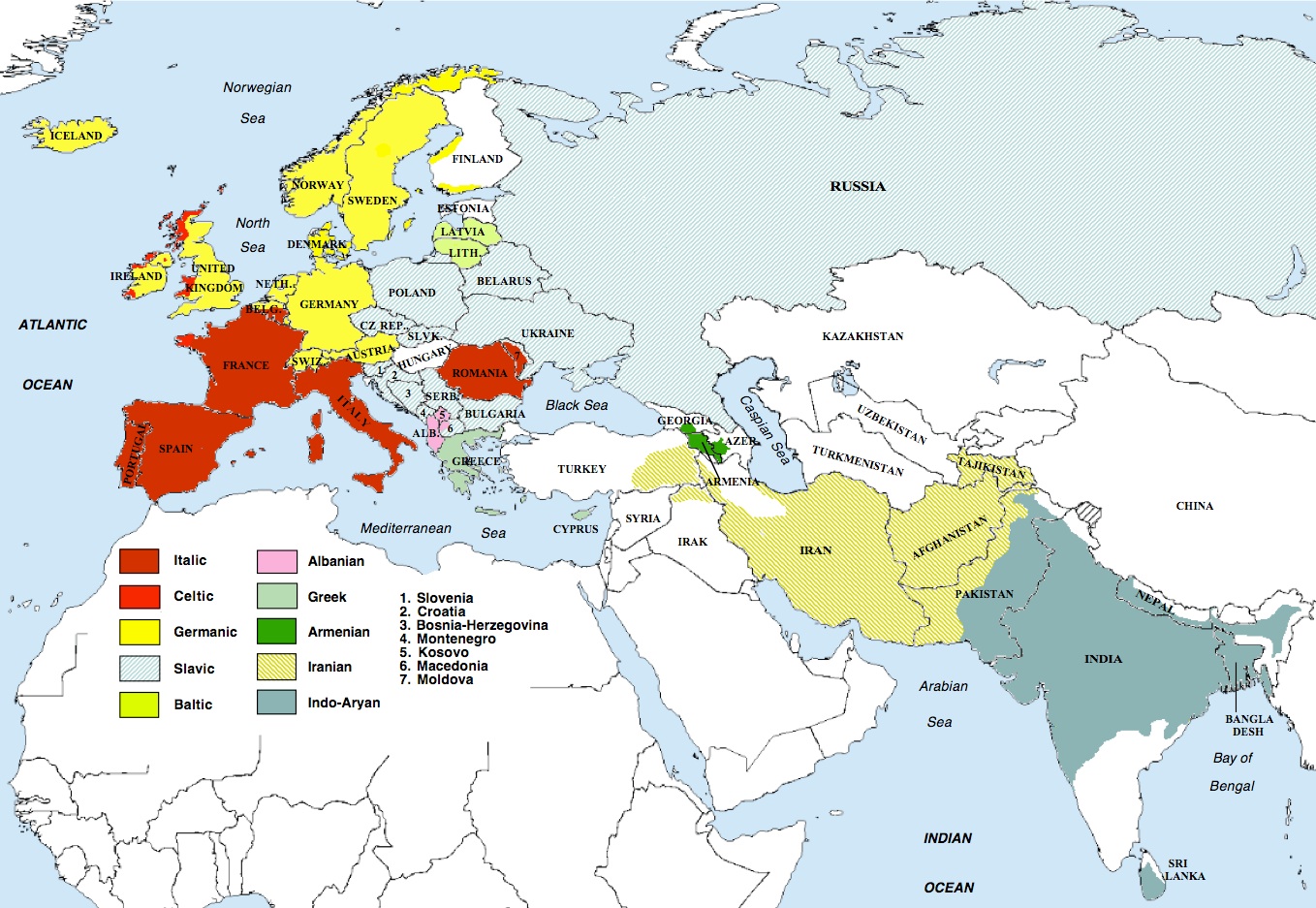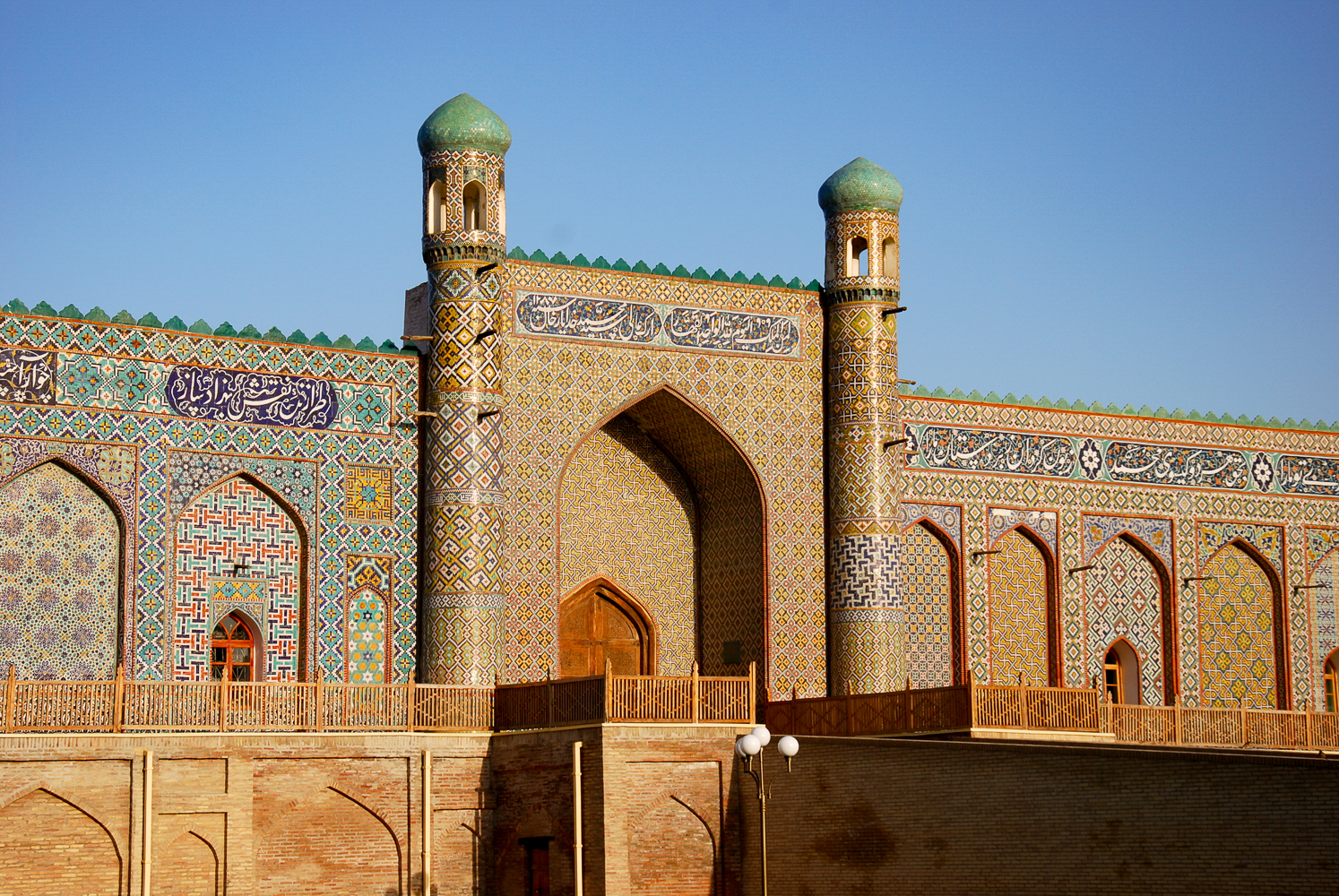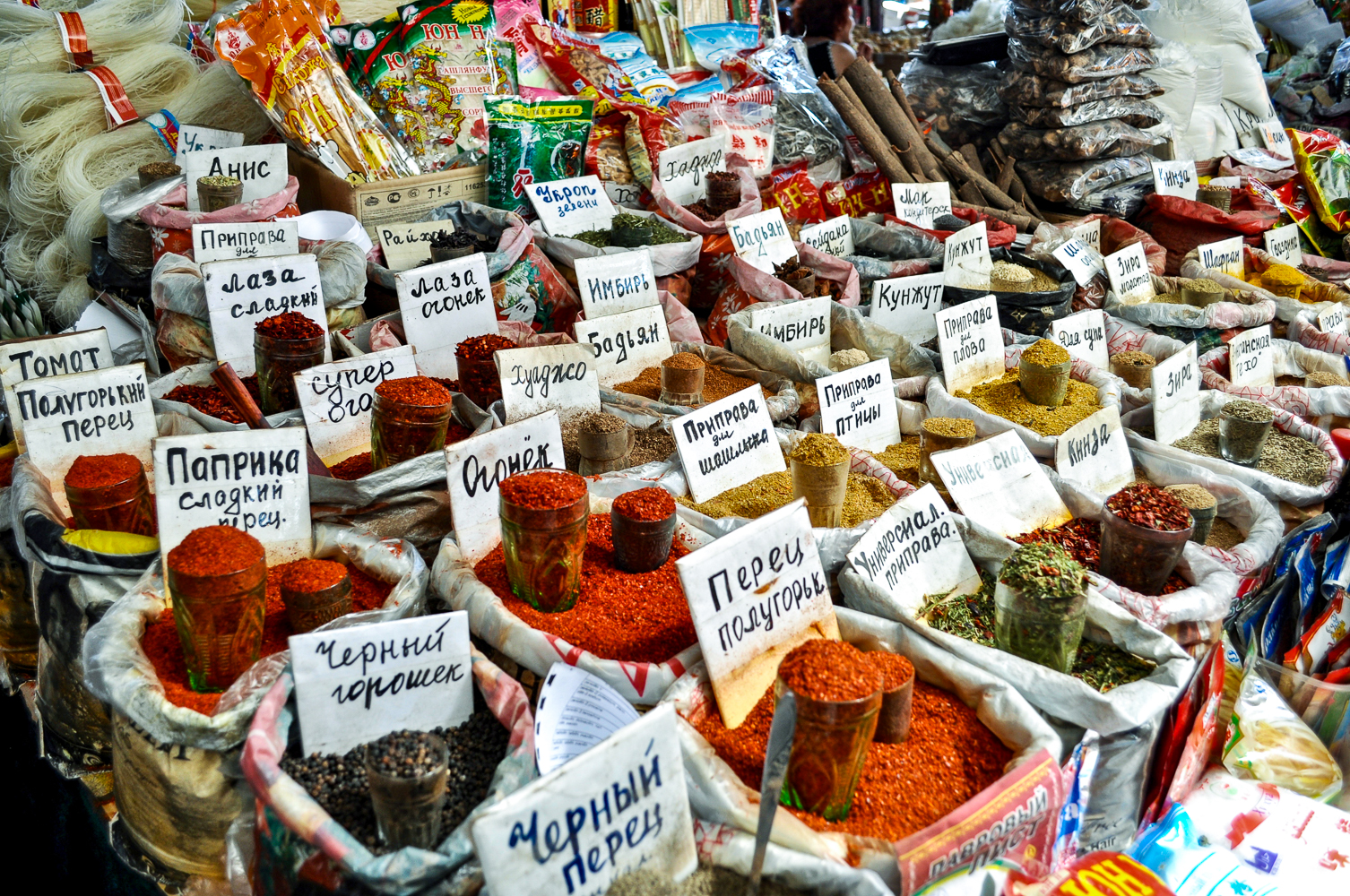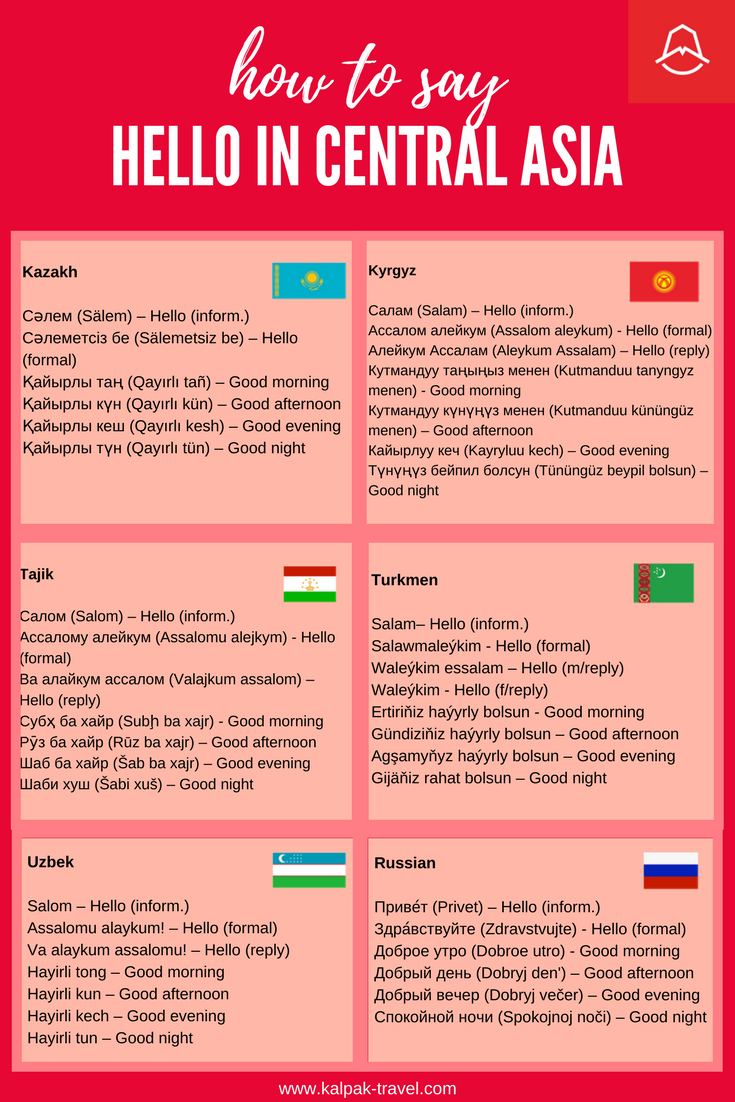Languages in Central Asia
Kazakh? Kyrgyz? Tajik? Turkmen? Uzbek? Languages in Central Asia all sound very exotic and most people have difficulties to classify them. Knowing the national languages or a few words opens many doors for travelers. Often it’s enough being able to say hello and thank you to put a smile on the other persons face. This small effort is worth it in any case! In this blog, we give some information about the different languages and you learn to say hello in Central Asia.
What are the similarities / differences of the Central Asian languages?
Apart from Tajik, which is the Persian language, the others are Turkic. The Turkic language family comprises around 40 languages and is spoken by 180 million native speakers. Kazakh, Kyrgyz, and Karakalpak (in Uzbekistan) belong to the West Turkic (Kipchak); Turkmen (as well as Turkish) belongs to the Southwestern Turkic (Oghusian) and Uzbek to the Southeastern Turkic (Uighur) branch. The speakers of the different Turkic languages are (mostly) able to communicate with each other, especially speakers from the same language branch.
What’s about Tajik respectively the Persian language? Persian is a branch of the Iranian language. Around 150 million people worldwide speak one of the approximately 50 Iranian languages as their native language. Due to its political boundaries and the influence of Russian and neighboring Turkic languages, Tajik has split off from the Persian dialects spoken in Iran and Afghanistan. Nevertheless, communication between speakers of the Persian language group is possible.
As you see in the figure below, the Iranian language is an Indo-European language and is therefore related to most European languages.

source: http://www.languagesgulper.com/
Persian and Arabic influence in Turkic languages
The Central Asian states belonged to the Persian Empire for a long time, during this period Persian was the lingua franca of the region. For this reason, Persian words can still be found in Turkic languages, such as the weekday names. ‘yakshanba’, ‘dushanba’, ‘seshanba’, et cetera. ‘shanba’ means Saturday and ‘yak’, ‘du’, ‘se’ are the numbers one, two three. That means the first, second, third day after the Saturday. However, the Persian numbers are only used for the weekdays. Otherwise, the numbers are used in Turkic. (bir, ikki, uch, etc.) The words and the pronunciation can vary from country to country, but they’re very similar.
With the spread of Islam, starting from the 7th century, many Arabic words found their way to Central Asia. The most widely used throughout the Islamic area is the Arabic set phrase ‘as-salam alaykum’, which means ‘peace be upon you’, which can be used formally as well as informally. Some examples of Arabic words: kitab-kitob (book), qalam-kalam (pen), tarikh-tarix (history), vaqt-vaqt (time), ism-ism (name).
* We use the Uzbek spelling because it uses the Latin alphabet.

Russian – the lingua franca – and English
Due to the common Russian (Czarist / Soviet Union) past, the Russian language is widespread throughout Central Asia and is still used as the lingua franca. The spread of Russian, however, is steadily decreasing. However, this depends on the country and in the countryside, it is usually more difficult to communicate in Russian. In Kazakhstan and Kyrgyzstan Russian is still an official language. At the moment English is not much spread in Central Asia, but the western influence and the interest in the English language, mainly among young people, increase.

With our graphic, you’ll be able to say hello in all five Central Asian languages as well as in Russian. Use it during your journey through Central Asia or just for fun!

Check out our Best of Central Asia Tour to practice your language skills in all “5 Stans”
Written by Marlene Hofer



